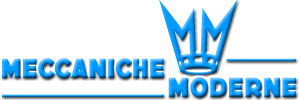"SOAP
DIFFERENT" is the trade name of the completely new and
revolutionary soap making process recently developed by MECCANICHE
MODERNE, the leading company for more than 100 years in the soap
making and soap processing plants and equipment.
Before giving the detailed process description of this novel
process we would like to reflect on the currently used soap making
technologies, i.e. the "fully boiled" and the "semiboiled"
process.
The "SOAP DEFFERENT" process is covered by:
Italian Patent No. 25875 BE/2003
European Patent No. 1126018
USA Patent No. 6,605,586 B2
"FULLY
BOILED" Soap Making
In all "fully boiled" plants, either batch
or continuous,
oils are saponified by caustic soda, giving a mixture of soap,
glycerine, water, and the impurities contained in the raw materials.
This mixture is than diluted, or "washed", with brine
(solution of sodium cloride in water) to remove glycerol and
impurities. This washing process is possible as the soap is not
soluble in brine over a certain minimum concentration; so the
brine only removes glycerol and water soluble impurities. After
washing the soap separates into a soap rich top layer (neat soap)
and nigre or nigre lyes.
"SEMIBOILED"
Soap Making
In the early/mid nineties soap manufacturers aimed to reduce
the complexity of the above process re-introducing the "semiboiled"
process that took ground again due to the offer on the market
of high quality fatty matters at reasonable cost. The "semiboiled"
process, provided that are used edible grade raw materials, allows
the direct production even of high quality soap without the necessity
to wash the product of the saponification. The raw material are
already pure enough.
Of course the glycerol remains in the soap but as glycerol is
a valued component of high quality soap and the glycerol recovery
is no more as profitable as in the past it is more simpler to
leave glycerol in the final product.
By both the "fully boiled" and the "semiboiled"
process to-day is produced a soap at about 62 % TFM content so
to have a laundry soap at higher TFM concentration or a toilet
soap at 78 % TFM is necessary to concentrate the soap by partial
evaporation of water. This operation is generally performed in
the well known vacuum cooling and drying plants.
AREAS
for IMPROVEMENTS in TRADITIONAL SOAP PRODUCTION
Due to the complexity of the above mentioned processes a certain
variability in product composition is virtually unavoidable,
even with tight process control systems and maximum attention
of the operators involved. In addition the overall size of these
plants is quite substantial and hence the cost for purchase,
installation, maintenance, and operation are fairly high.
Furthermore the above vacuum drying is often a source of grit
or sandy feel in use when using the final toilet soap tablet.
This is due to the overdried particles present in the noodles
that cannot be completely removed even by close setting of the
rolls in the toilet soap finishing line mill.
"SOAP
DIFFERENT" PROCESS ANSWERS
With the availability of high quality raw materials at reasonable
costs soap washing is no longer necessary, the more as the now
permanently low glycerine price do not offer a profit from glycerol
extraction and evaporation/distillation.
The possibility to remove the washing stage from soap making
drove MECCANICHE MODERNE to develop this new saponification process
direct from oils to high TFM soap without the need of vacuum
drying.
In the "SOAP DIFFERENT" process saponification
is curried out at high temperature and the liquid hot soap, water
and glycerol mixture is immediately trasformed into cool and
solid soap noodles or bars trough a machine expecially developed
for this purpose.
In this machine no external or internal flashing occurs hence
the extruded product is absolutely uniform in composition and
temperature.
The process and the machinery involved are covered by MECCANICHE
MODERNE patent.
The saponification unit can be either batch
or continuous. However,
as one of the objective of this process is semplification, the
batch route is the preferred, particularly for small to medium
size operations. After saponification each batch will be analysed
for free alkaly, and the batch will be corrected to the target
composition prior to cooling and noodling. For larger operations
the continuos process may be more attractive as the amount of
product in the system (hold up) is significantly lower.
BENEFITS
of the "SOAP DIFFERENT" PROCESS
The completely different and novel approach to soap making and
soap processing of the MECCANICHE MODERNE "SOAP DIFFERENT"
plant has a number of direct and indirect benefits for the customer.
- Significantly lower capital investment.
- Low maintenance.
- Very limited space required.
- Process semplicity (compare the bloch diagrams of the traditional
and the "SOAP DIFFERENT" processes)
- No specific soapmaking skill required. It is an "all-in"
process, just a mixing of raw material without the necessity
to carry out the complex and time consuming task of soap separation,
fitting, etc.
- Very low variability in product composition.
- Very high flexibility: suitable for toilet soap (at any TFM),
and laundry soaps with or without fillers.
- Quick start up and easy change over.
- Even at high TFM no grit in the soap (as there is no vacuum
drying) and therefore no downstream milling required.
- High raw materials flexibility: either oils, fatty acids,
or mixture of those can be used - provided all are of good grades.
- No environmental loads: no buy-products, no effluent contaminated
with soap, no soap dust generated, and therefore no TFM loss.
- Higher oil yield (more toilet soap noodles per ton of oil)
as glycerol remains in the product.
- Almost no energy required for heating.
The limited
investment and the reduced space for the operation makes the
"SOAP DIFFERENT" process the ideal solution
for companies who so far could not efford a saponification plant
due to the limited volume of their production, or because their
toilet soap finishing operation did not generate enough funds
to buy their own soap making equipment.
In particular the limited hold up and the high flexibility makes
the "SOAP DIFFERENT" process specially suitable
for producers of small quantities of high quality products who
up to now have been forced to accept large purchase orders of
noodles from larger suppliers.
Of course the "SOAP DIFFERENT" process is also
the solution for all companies aiming to reduce their manufactuing
costs significantly and/or those who must reduce their environmental
loads.




